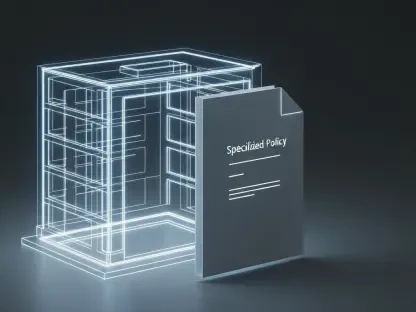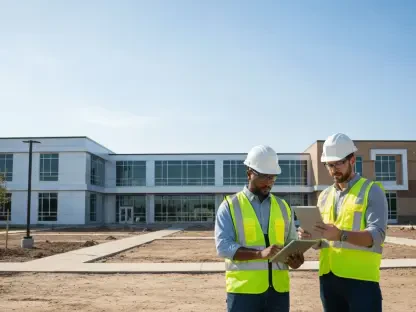In a world where infrastructure challenges grow increasingly complex due to rapid urbanization, climate change, and resource constraints, the role of digital innovation has never been more critical. Bentley Systems, a global leader in infrastructure engineering software, has recently announced the finalists for this year’s Going Digital Awards, shining a spotlight on groundbreaking achievements that redefine how projects are designed, built, and managed. Revealed on August 5 from their headquarters in Exton, Pennsylvania, this esteemed program honors engineers, project teams, and organizations across the globe for their transformative use of technology. With nearly 250 nominations submitted from 47 countries, the diversity and scale of the entries underscore a universal push toward smarter, more sustainable solutions. These awards not only celebrate excellence but also set a powerful benchmark for the future of infrastructure development, inspiring professionals to leverage digital tools in addressing some of the most pressing issues of today.
Celebrating Innovation in Infrastructure
Global Reach and Impact
The international scope of this year’s Going Digital Awards is a testament to the widespread adoption of digital solutions in tackling infrastructure challenges across varied landscapes. Representing 47 countries, the finalists include remarkable projects from nations as diverse as Brazil, China, India, and the United States, illustrating how technology transcends borders to address unique regional needs. Whether it’s enhancing urban mobility in densely populated areas or improving rural connectivity, the entries reflect a shared commitment to progress. This global representation highlights not just the universality of infrastructure demands but also the adaptability of digital tools in providing tailored solutions, from high-tech cities to remote regions facing distinct environmental and economic hurdles.
Beyond geographical diversity, the range of project types among the finalists showcases the versatility of digital applications in infrastructure. From sophisticated urban development platforms in Saudi Arabia to ambitious high-speed rail initiatives in Italy, the nominated works span a spectrum of sectors and complexities. Each project leverages cutting-edge tools to solve specific problems, whether it’s optimizing space in crowded cities or ensuring safety in large-scale transit systems. This variety emphasizes the awards’ role in recognizing innovation across all facets of infrastructure, demonstrating that digital transformation can impact everything from small community projects to massive engineering feats with far-reaching implications.
Focus on Sustainability
A dominant theme among the finalists is the unwavering focus on sustainability, with many projects directly addressing environmental challenges through innovative technology. Notable examples include waste-to-energy conversion efforts in Indonesia, which turn refuse into a valuable resource, and advanced flood control modeling in China that mitigates the risks of extreme weather. These initiatives reflect a broader recognition of the urgent need to combat climate change while meeting infrastructure demands. By prioritizing eco-friendly solutions, the finalists show how digital tools can reduce environmental footprints and create systems that withstand the test of time, aligning with global efforts to protect natural resources.
Equally important is the emphasis on long-term resilience, ensuring that infrastructure not only meets immediate needs but also adapts to future uncertainties. Many of the nominated projects integrate predictive analytics and simulations to anticipate challenges like rising sea levels or population growth, embedding durability into their designs. This forward-thinking approach, seen in efforts across various categories, underscores a shift toward building systems that endure amidst changing conditions. By leveraging technology to enhance adaptability, these projects contribute to a vision of infrastructure that supports sustainable development goals, safeguarding communities for generations to come.
Digital Tools Driving Progress
Transformative Technologies
At the heart of the finalists’ achievements lie transformative technologies that are reshaping the infrastructure landscape with unprecedented efficiency and precision. Tools such as artificial intelligence (AI), digital twins, and Building Information Modeling (BIM) are central to many projects, enabling teams to streamline design processes, improve project delivery, and enhance asset management. These innovations allow for real-time insights and data-driven decisions that minimize errors and reduce costs. From conceptual planning to operational maintenance, the integration of such advanced systems marks a significant leap forward, empowering professionals to tackle complex challenges with greater accuracy and foresight in an increasingly demanding environment.
The practical impact of these technologies is vividly illustrated in specific projects among the finalists, showcasing their role in modernizing traditional practices. For instance, Italy’s “Digital Construction Site 4.0” by Italferr S.p.A. employs real-time data monitoring to optimize construction workflows, while the UK’s Severn Tunnel transformation by Network Rail uses digital twins for predictive maintenance. These examples highlight how digital tools are becoming standard in ensuring project success, turning once labor-intensive tasks into streamlined operations. By adopting such innovations, the industry sets new benchmarks for quality and efficiency, proving that technology is not just an enhancement but a necessity for future-ready infrastructure.
Bentley’s Enabling Platforms
A key enabler of the finalists’ success is the suite of software platforms provided by Bentley Systems, which foster collaboration and data integration across diverse teams. The iModel technology, in particular, stands out for its ability to create unified digital environments where stakeholders can share information seamlessly, as demonstrated in ACCIONA’s 4D planning for Melbourne’s M80 Ring Road in Australia. This capability breaks down silos, ensuring that architects, engineers, and contractors work in sync, ultimately improving project outcomes. Such tools are instrumental in managing the complexities of large-scale initiatives, where coordination is often a significant hurdle to timely and cost-effective delivery.
Moreover, Bentley’s software has emerged as an industry standard, offering a common framework that drives innovation through enhanced interoperability. By providing solutions that integrate various data sources and support multidisciplinary workflows, these platforms empower teams to achieve better results with fewer resources. The widespread reliance on Bentley’s tools among the finalists underscores their pivotal role in advancing digital transformation, allowing for smoother transitions between project phases. This technological backbone not only boosts efficiency but also inspires confidence in adopting digital methods, paving the way for broader industry adoption and continuous improvement in infrastructure practices.
Highlighting Key Categories and Projects
Diverse Infrastructure Sectors
The breadth of categories in this year’s Going Digital Awards reflects the extensive reach of digital innovation across infrastructure sectors, each addressing distinct challenges with tailored solutions. In Bridges and Tunnels, SENER’s Salvador-Ilha de Itaparica Bridge project in Brazil exemplifies cutting-edge design in demanding environments, while Energy Production features sustainable advancements like PT Wijaya Karya’s waste-to-energy initiative in Indonesia. Similarly, Water and Wastewater projects, such as flood control systems by CSCEC AECOM in China, and Rail and Transit efforts like PT Kereta Api Indonesia’s smart infrastructure, demonstrate specialized applications of technology. These diverse categories highlight how digital tools are revolutionizing every corner of the industry, from structural engineering to resource management.
Further illustrating this diversity, the awards cover sectors like Roads and Highways, Structural Engineering, and Transmission and Distribution, each showcasing unique technological deployments. For instance, projects in geospatial and reality modeling, such as the urban data platform by Al Madinah Region Development Authority in Saudi Arabia, integrate vast datasets for better planning. This cross-sector innovation reveals a common thread of leveraging digital solutions to enhance precision and efficiency, regardless of the project’s focus. By recognizing achievements across such a wide array, the awards emphasize the universal potential of technology to transform infrastructure, setting a precedent for comprehensive digital adoption in solving specialized challenges.
Addressing Societal Needs
Many of the finalist projects go beyond technical innovation to address pressing societal needs, using digital tools to improve quality of life and access to essential services. In Brazil, the Prosamin+ program by Adax Consultoria focuses on urban development in underserved areas, integrating social and environmental goals through advanced planning technologies. Likewise, Empresas Públicas de Medellín in Colombia optimizes the Medellín Aqueduct Primary Network to ensure reliable water access for communities. These initiatives highlight a growing recognition that infrastructure must serve people first, tackling issues like urbanization and resource scarcity with solutions that prioritize community well-being over mere functionality.
This focus on societal impact also reveals a broader trend of aligning infrastructure with human-centric outcomes, ensuring that technology benefits extend to the most vulnerable populations. Projects in categories like Cities, Campuses, and Facilities, such as Voyants Solutions Private Ltd.’s masterplan for Atal Puram Township in India, blend detailed design with digital tools to create livable, sustainable spaces. By addressing fundamental needs—clean water, safe transit, and planned urban growth—these efforts demonstrate how digital innovation can bridge gaps in access and equity. The awards thus celebrate not only technological prowess but also a commitment to using infrastructure as a tool for social good, inspiring future projects to prioritize impact alongside efficiency.
Reflecting on a Digital Milestone
Looking back, the announcement of the finalists for this year’s Going Digital Awards marked a significant moment in recognizing the power of digital transformation within the infrastructure sector. Held against the backdrop of global challenges, the event showcased how technology provided actionable solutions through diverse projects across 12 categories. The international gathering of talent and ideas, culminating in the reveal on August 5 in Exton, Pennsylvania, underscored a collective drive toward progress. As the winners were set to be announced on October 16 at the Year in Infrastructure conference in Amsterdam, anticipation built for deeper insights into industry trends. Moving forward, stakeholders are encouraged to explore these best practices, adopt similar digital strategies, and collaborate on platforms like Bentley’s to address emerging needs. This milestone serves as a call to action, urging continued investment in technology to build a more resilient, connected world through smarter infrastructure.









